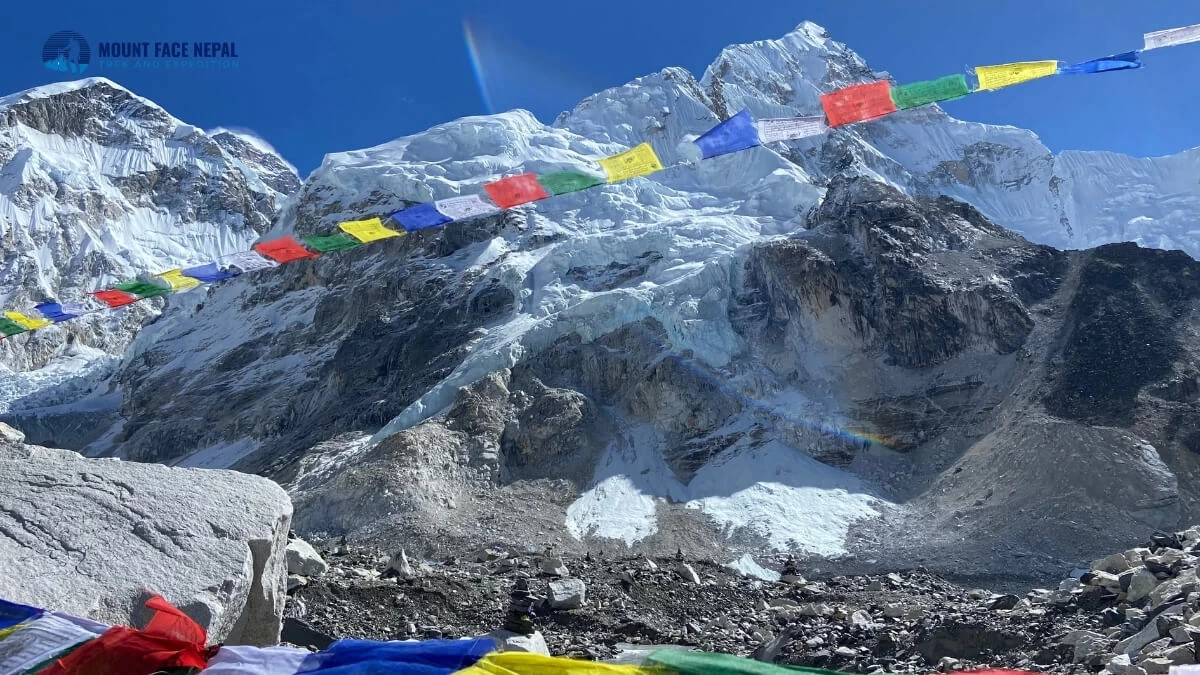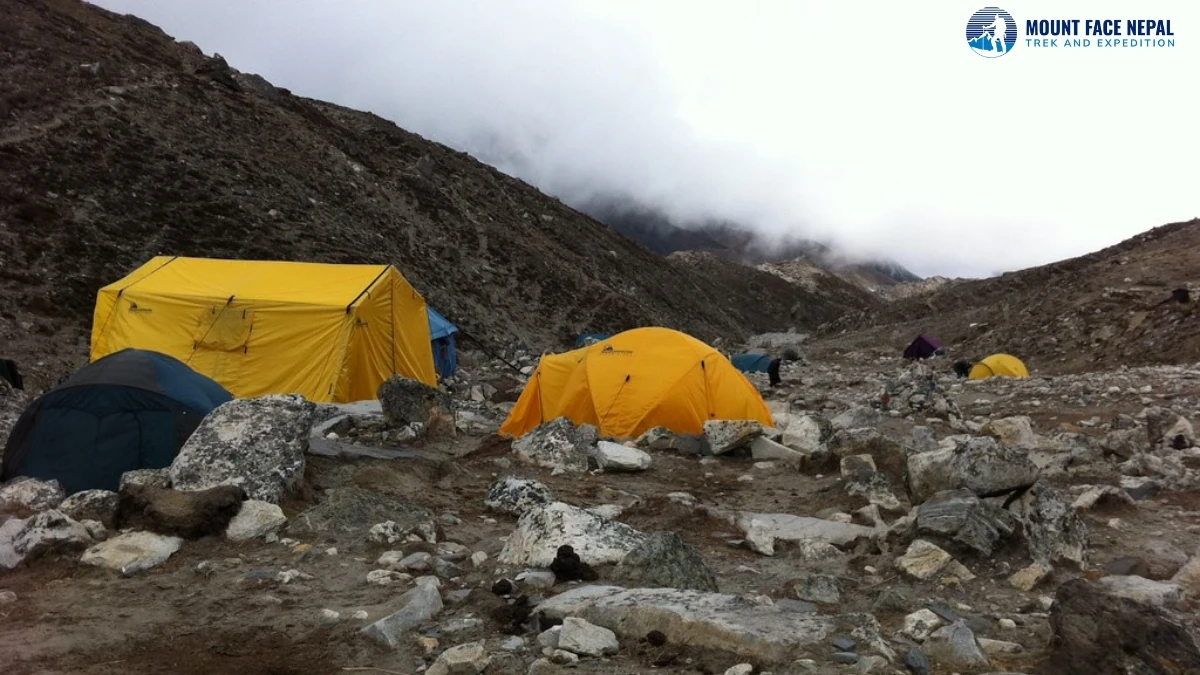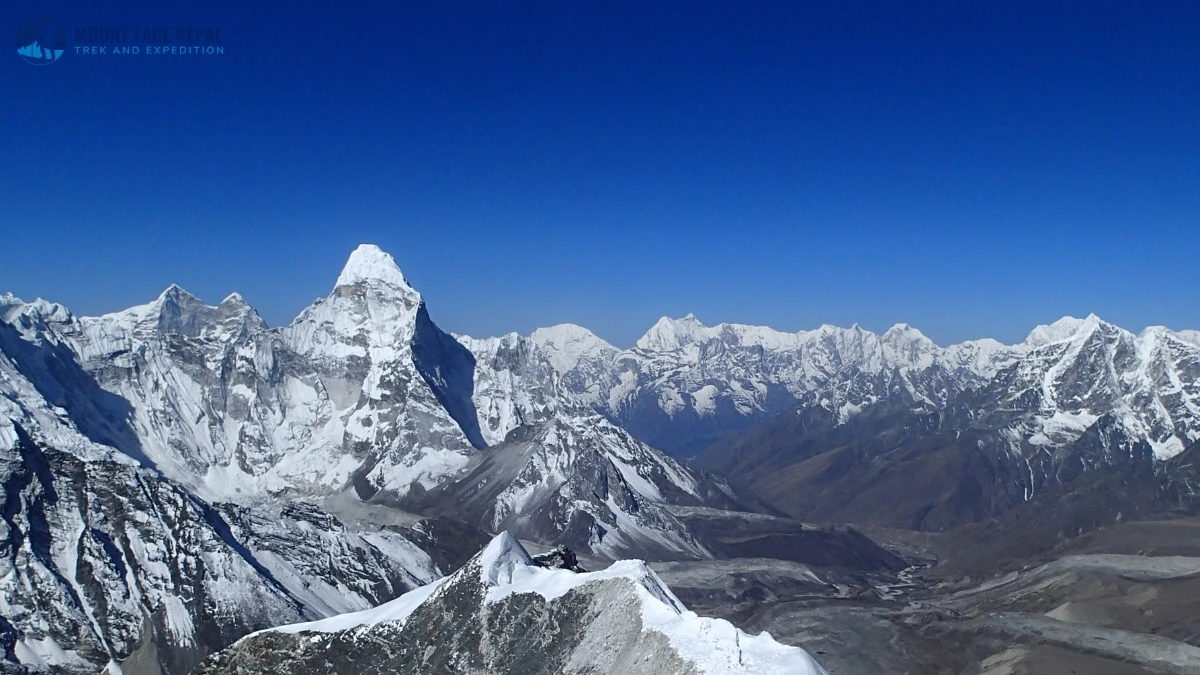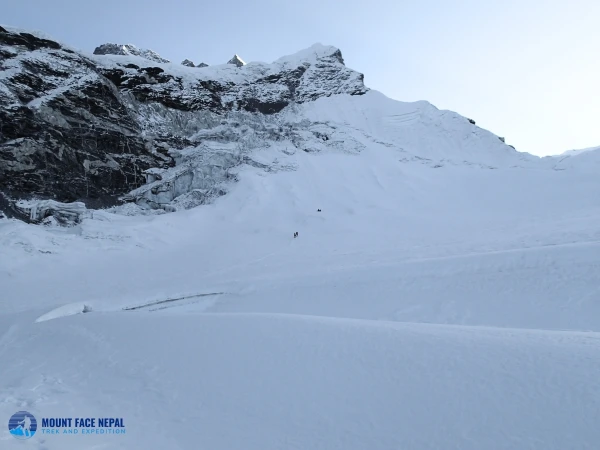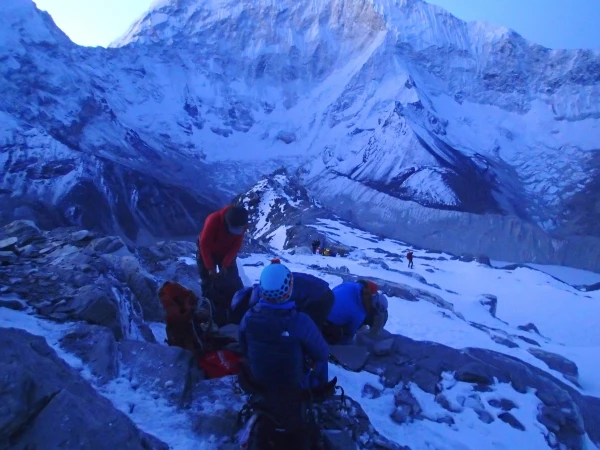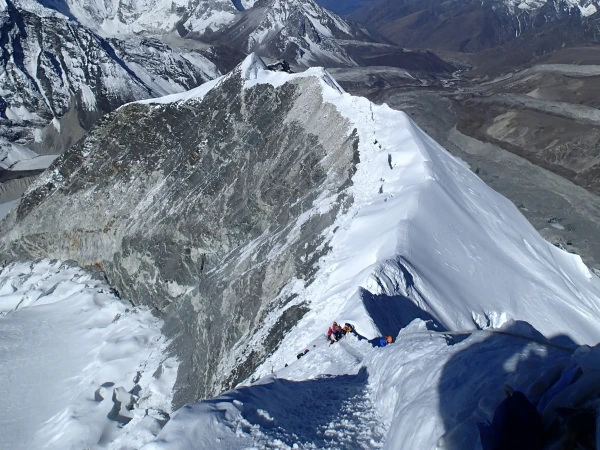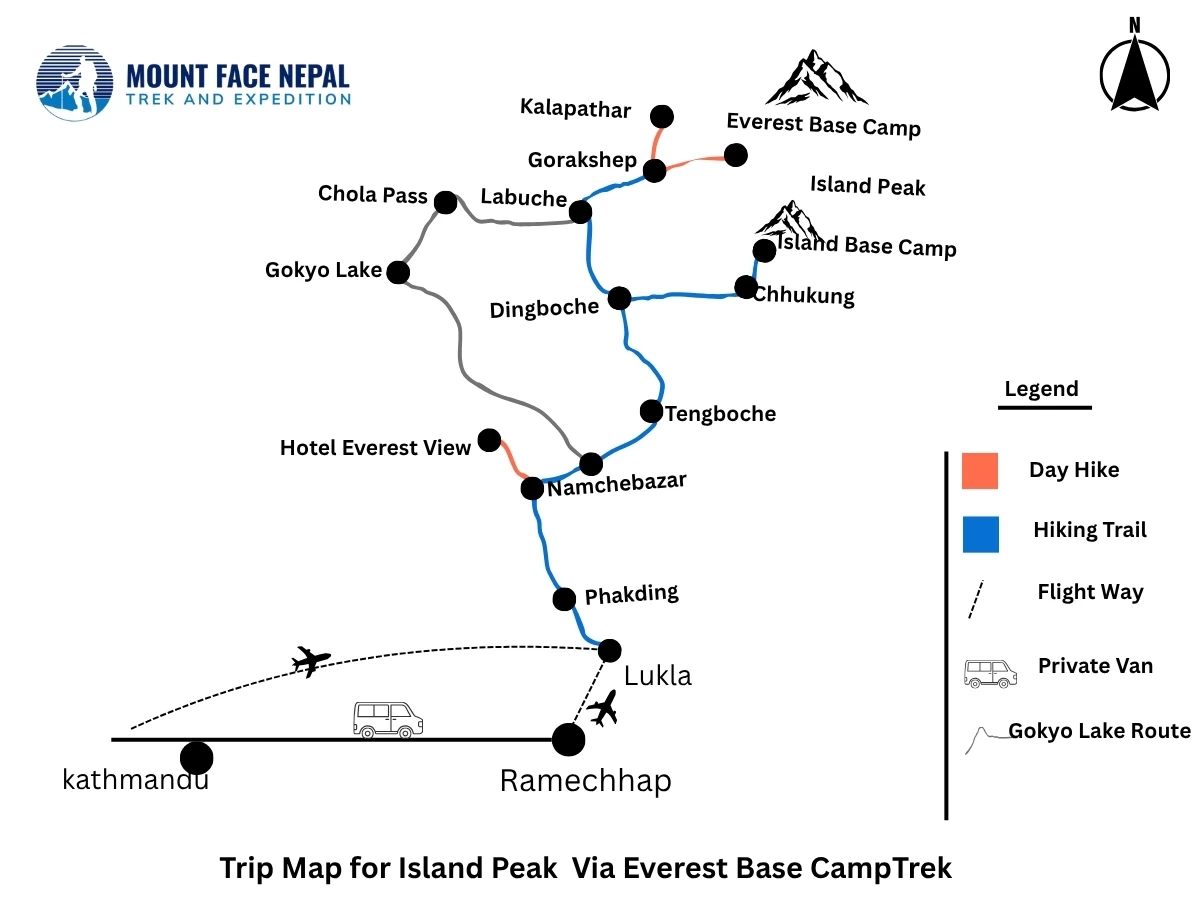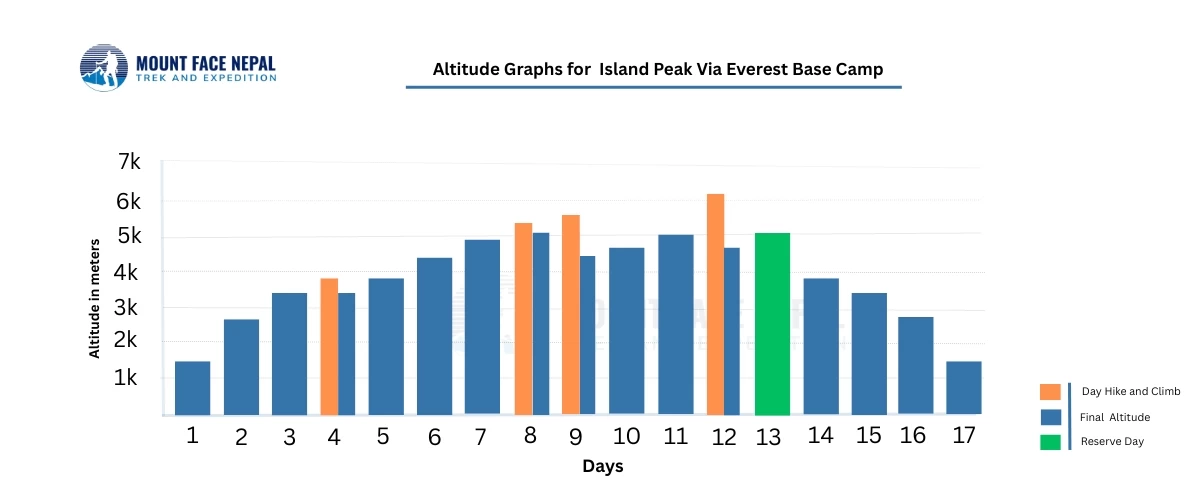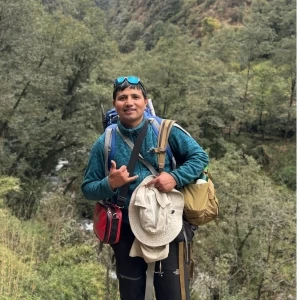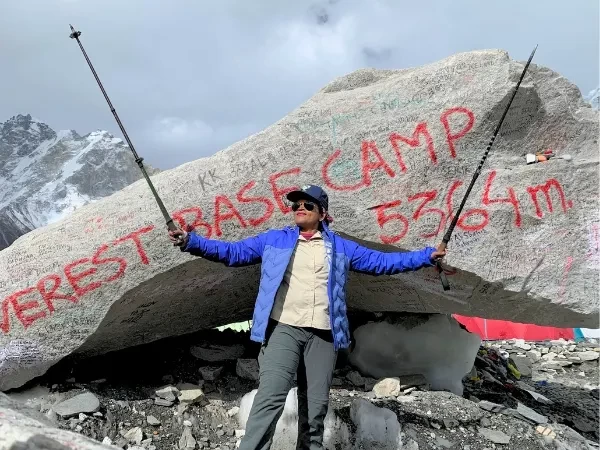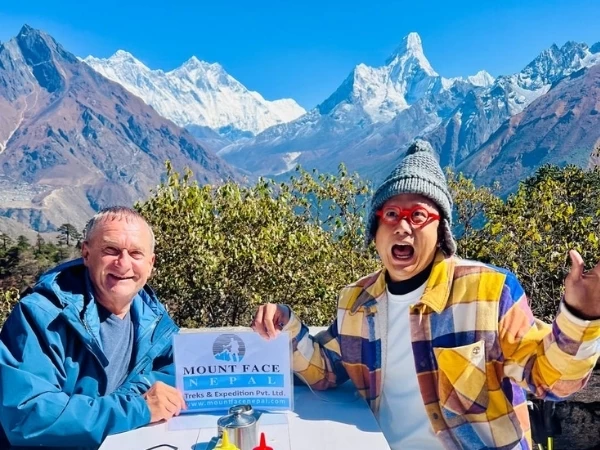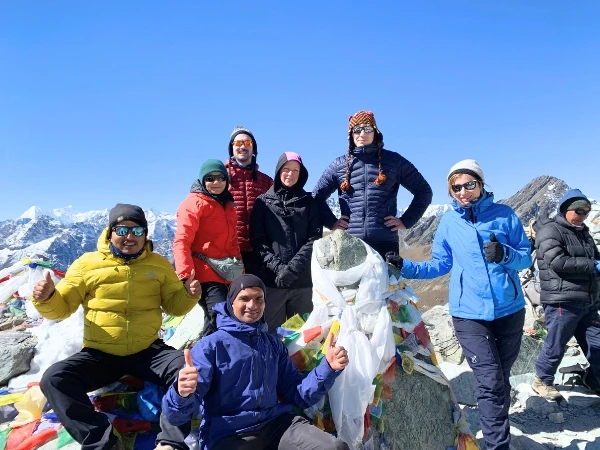Overview
Island Peak climbing via Everest Base Camp Trek is an epic trekking and climbing adventures in the Khumbu Valley, fit for those dreaming to combine typical Himalayan trekking with peak climbing. This thrilling adventure starts with a thrilling flight to Lukla and follows the glorious Everest Base Camp Trekking trail via Sherpa villages like Namche Bazaar, Tengboche, and Dingboche. Trekkers climb gradually, experiencing dramatic high-altitude landscapes, ancient Gumba, and warm local hospitality in the soul of the Khumbu region.
After reaching Everest Base Camp and climbing Kalapatthar for panoramic sunrise views of Mount Everest, the trekking route aim toward Island Peak (6,189 meters) via Dingboche, also known as Imja Tse. This part of the trek jounrey into the wild Imja Valley, where trekkers prepare for their Island Peak Climbing expedition. The summit push includes glacier travel, fixed ropes, and a steep final ascent—ideal for adventure seekers ready to step into Himalayan mountaineering. The reward? Fairy-tale views of Lhotse, Ama Dablam, Baruntse, and even Makalu on a clear day.
Perfect for both seasonal trekkers and beginners in mountaineering, Island Peak via Everest Base Camp offers a complete Himalayan experience—blending adventure, altitude, and achievement. This Everest Base Camp Trek and Island Peak Climbing itinerary is one of the best ways to prepare for future 7,000m or 8,000m expeditions. Whether you're dreaming to conquer your first Himalayan summit or discover the Everest region in details, this trek plan provides an unforgettable experience in Nepal’s high-altitude zone.
Island Peak Climbing and Everest Base Camp Trek Package Cost
The best price deals of Island Peak peak climbing and Everest Base Camp trek are offered on a per person basis, depending on the basis of group size, the services of a guide, and inclusions. The fully guided package will cost you on average between 2500 to 4500 USD per person. This normally includes domestic flights, permits, boarding, food on the trekking route, climbing equipment, a licensed guide, porters, and permission fees on Island Peak climbing.
Other packages could provide other services such as transfer services, transactions at the airport, and hotels in Kathmandu, and a training day on how to climb. Never forget to see what is covered in the cost of your Island Peak and Everest Base Camp trek to evade the presence of hidden costs. This safety, high-quality, experienced climbing Guides, and adequate logistics are the key to a successful high-altitude adventure in the Himalayas, as investing in a reputable company guarantees all of that.
Best Itinerary for Island Peak Climbing with Everest Base Camp Trek
Island Peak climbing, combined with the Everest Base Camp, is one of the most appealing and fulfilling trips sought by both trekkers and climbers in Nepal. The ideal route into this combo trip normally starts with a scenic flight into Lukla, which is the gateway to the Everest region, and then continues by way of Kathmandu. The trail then leads to the traditional Everest Base Camp trail, up the side of the vibrant Sherpa villages of Phakding and Namche Bazaar, the epicenter of the Khumbu region. Trekkers' next hike to Tengboche, with its spectacular monastery and Ama Dablam views, then up to Dingboche and Lobuche, ascending gradually, as they acclimatize.
Having arrived at the famous Everest Base Camp and climbed Kala Patthar for stunning panoramas of Mount Everest and nearby mountains, the journey continues to Chhukung. Island Peak climbing preparation is done in this small settlement. An effective itinerary would ideally not take less than 18-21 days, with the necessary days needed to acclimatize to the high altitude and avoid altitude sickness. It is a longer path that will allow you to have some time to absorb the spectacular views of the Himalayas, immerse yourself in the real culture of Sherpas, and acclimatize before a technical ascent. Island Peak and Everest Base Camp fit into present the best blend of trekking and mountaineering experience in Nepal.
Best Season for Island Peak Climbing and Everest Base Camp Trek
Island Peak climbing and Everest Base Camp trek are best done in the two best trekking seasons in Nepal, the pre-monsoon (spring) and the post-monsoon season (autumn). The trek is during spring, March to May, which has stable weather, clear sky, and a beautiful green trail with flowering rhododendrons, and the trek is colorful and picturesque. The hiking conditions and the weather conditions at higher altitudes, favoring mild temperatures and prolonged daylight, are the most ideal periods for both trekking and climbing Island Peak.
Autumn, starting with late September and continuing until November, is also perfect. The air is clean and clear after the monsoon, giving excellent visibility of Everest, Lhotse, Ama Dablam, and other mountains. The temperatures are cool enough to be comfortable when trekking and climbing, and there is little chance of violent storms or extreme snowfall. Bad weather and trail conditions during monsoon season (June to August) and the severe winter (December to February) require special preparation and experience to negotiate.
